In recent years, leasing has grown in popularity and is now the preferred method for acquiring new equipment. Ho...
In recent years, leasing has grown in popularity and is now the preferred method for acquiring new equipment. However, many of the features that make leasing a cost-effective way to procure lift trucks and optimize operations can, if poorly managed, create even more problems.
For example, the end of the lease term presents a great opportunity to reevaluate a fleet and upgrade to the latest equipment. On the other hand, it can also signal the beginning of unnecessary monthly renewals and penalties for overages.
The key challenge when designing the right lease agreement is “uncertainty.” When signing on the dotted line, how can a fleet owner possibly know what utilization will look like in five years? Thankfully, the uncertainty is now centered around how much more the lift trucks will be used, not how long they’ll stay idle.
“Customers feel as if they’re getting back to normal utilization, and they’re hoping it stays that way,” says Bob Piot, national sales and marketing manager for Toyota Financial Services. “Once the economy warmed up, the hours started going on those lift trucks pretty fast; however, they’re really not sure whether what happened in 2012 will happen again.”
Leasing on the rise
What happened in 2012 was a continued growth in forklift sales—and a continued growth in the number of those sales that were structured as leases.
Approximately 65 percent of all new purchases are acquired through a lease versus cash, according to Jim Kelly, senior managing director of equipment finance for GE Capital. Currently, 75 percent of those are fair market value leases, says Kelly, as distinct from lease-to-own arrangements.
The popularity of leases is not an accident. Following the economic downturn, finance companies and equipment manufacturers sought to stimulate sales with a growing array of new, more flexible lease structures. Although customers are more able than ever to tailor an agreement to provide the best possible value, Piot believes that the proliferation of options has become a problem.
“A lot of these programs are complicated and have confused customers who are not savvy,” says Piot. “Some who were looking for low payments have ended up paying more, and spending more overhead in their accounts payable department.”
After having been burned by leasing in the past, some customers have again transitioned from paying cash up front to leasing equipment, says Tina Goodwin, director of financial services for NACCO Material Handling Group. “Some were larger national accounts that had leased long ago and had no interest in doing it again,” she says. “We took them through an analysis of just the pure financing savings, not including any maintenance, and the savings were substantial. At a minimum, you will save 5 percent and probably closer to 10 percent on equipment costs.”
Capturing and predicting utilization data
The best leases match the term to the economic life of the truck, which is generally 10,000 hours of use. Assuming the lift truck will be used five days a week for eight hours a day, that’s 2,000 hours per year for a lease term of five years.
However, as too many have learned the hard way, that assumption is a problem. Over-utilization leads to increased maintenance costs, increased downtime, and end-of-term penalties. Under-utilization equals money unnecessarily spent.
“In the past, lessees would have typically entered into a lease for 2,000 hours per year—the traditional annual usage—whether they thought that they would utilize it or not,” says Kelly. “Today, lessees are looking to past utilization, coupled with their expected future needs, to derive their annual usage hours tied to the lease.”
Nick Adams, business development manager for the Mitsubishi Caterpillar Forklift America fleet services group, agrees. “I have seen companies where procurement folks structure leases with a term and annual usage that is not in sync with the maintenance program term and annual usage as designed by operations,” he says. “When they’re out of sync, it usually results in additional costs to the company that could have been avoided.”
Adams says that he’s seeing more and more companies form cross-functional “decision committees” that are made up of both procurement and operational management people. The perception is that this approach complicates or extends the procurement process, says Adams, but it also reduces costs and significantly helps reduce downstream issues.
Detailed usage data is an essential foundation for procurement and maintenance to stay on the same page. Many customers are seeing the benefit of adding wireless forklift fleet and operator management systems to their equipment, says Jeff Bailey, director of Crown Credit Company. “These types of systems collect valuable data that can be analyzed to help reduce maintenance cost,” he says. “This information also helps the procurement department determine when to replace equipment and the quantity needed.”
Although new technology and telemetry units can enhance the quality and variety of utilization data captured, Bob Chambers, regional account manager for Hyundai Forklift, says that the discovery process does not need to be complicated. “If you’re not looking to a third party to help, just get a spreadsheet and start looking.”
Accurate data can allow a customer to dial in a 3,000-hour lease or a 700-hour lease as appropriate to each lift truck. Brian Markison, senior manager of national accounts for UniCarriers Americas (formerly Nissan Forklift) offers an additional best practice, suggesting the term should consume only 80 percent of the economic life of the lift truck.



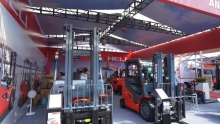
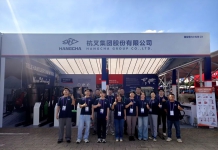


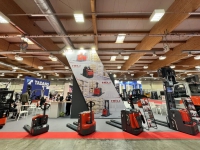


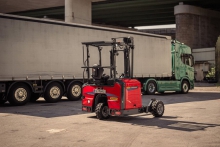

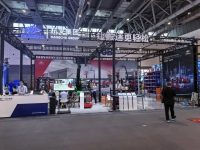


 粤公网安备 44010602003952号
粤公网安备 44010602003952号